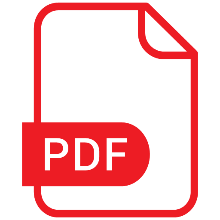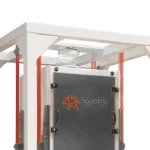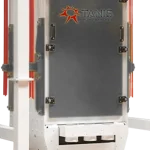Control Sieve
Control Sieve: The Final Safety Point of Quality Flour Production
The control sieve systems developed by Tanış A.Ş., which has been serving the milling sector since 2015, are the most effective way to ensure maximum purity and quality in your grains. The control sieves we produce in our Gaziantep-based production facilities with our experience in wheat, corn, and barley processing equipment serve as the final quality control point of your milling process.
The control sieve is a precision sifting equipment where flour obtained after grinding in the mill process undergoes final control. Its basic function is to ensure final product quality by removing foreign materials, metal particles, and non-standard particles from the flour.
Its strategic position in the mill process is generally in the post-grinding and pre-packaging stage. This position ensures final quality control of the end product that will reach the customer and guarantees product safety.
As the final quality control stage of the grain processing process, the control sieve works like the quality assurance department of the mill. The flour that has passed through the grinding process undergoes a final sifting here, thus ensuring the removal of unwanted materials and meeting product specifications.
Unlike other sifting systems in the cleaning and tempering section, the control sieve has a much more sensitive structure. It is specially designed to provide final control of processed flour rather than preliminary cleaning of unprocessed grain.
The structural features of the control sieve are specially developed for precise sifting operations. The stainless steel body, chassis designed with engineering calculations for vibration optimization, and special sieve surfaces are the fundamental elements that determine system performance.
The sifting mechanism works through controlled vibrations created by eccentric weights. These vibrations enable flour particles to move along the sieve surface and be classified by passing through sieve holes.
Precision sifting technology offers micron-level precision. Tanış control sieves have the precision to control particle size in the range of 75-250 microns. This precision is critically important for standardization of flour quality and texture.
Different sieve types are selected according to sifting needs. While single-layer sieves are used for simple control, multi-layer sieves allow simultaneous classification of particles of different sizes. Additionally, by integrating with specially designed magnetic systems, additional protection against metal contamination can be provided.
The sieve body is manufactured from food-grade stainless steel (AISI 304 or AISI 316). This material selection both meets hygiene standards and provides long-lasting operation. The body design includes quick-removable covers and access points for easy cleaning and maintenance.
The sieve surface consists of high-quality stainless steel wire mesh or laser-cut perforated sheet. While wire mesh sieves offer higher open area ratio, perforated sheets are more durable and long-lasting. Both types are manufactured from materials compliant with food safety standards.
Different hole diameters are selected according to the type of flour processed and desired quality. For fine flours, sieve openings in the range of 75-150 microns are used, while for coarse grindings, sieve openings in the range of 150-250 microns are used. Tanış control sieves offer easy transition between different product types thanks to their quick-changeable sieve cassette design.
Design solutions for durability include vibration-resistant connecting elements, shock-absorbing supports, and wear-resistant surface treatments. Specially designed tensioning systems ensure that the sieve surface remains at optimum tension, extending performance and life.
Technical Specifications and Performance Parameters
Tanış control sieves are offered in various technical specifications:
- Dimensions: Standard models in the range of 800x800mm – 2000x2000mm
- Capacity: Processing capacity between 1 ton/hour – 25 tons/hour
- Weight: Between 150 kg – 750 kg according to model size
- Sieve layers: Layer options varying between 1-3
- Motor power: Between 0.37 kW – 2.2 kW (varies according to capacity)
Vibration parameters are precisely adjusted for maximum sifting efficiency. Amplitude and frequency are optimized according to product type and flow rate. Typically, vibration frequency in the range of 1500-3000 rpm and vibration amplitude in the range of 3-5 mm are used.
Motor power and energy consumption values are quite economical, although they vary according to size and capacity. Thanks to energy-efficient motors and optimized mechanical design, energy consumption per ton has been minimized.
Processing capacity is directly related to sieve surface area and hole size. Standard models offer solutions in a wide capacity range from small mills to large industrial facilities.
Control and adjustment mechanisms provide flexibility to the user for optimum performance. Parameters such as vibration intensity, sieve inclination, and product flow rate can be adjusted with easily accessible adjustment mechanisms.
Model Options and Capacity Alternatives
Appropriate model selection for different facilities is made according to the facility’s capacity needs and physical space constraints. Tanış control sieves are offered in sizes ranging from compact models to large industrial units:
- TMSP-105 series: For small businesses with 1-5 tons/hour capacity
- TMSP-205 series: For medium-scale facilities with 5-10 tons/hour capacity
- TMSP-208 series: For large facilities with 10-18 tons/hour capacity
- TMSP-212 series: For industrial-scale facilities with 18-25 tons/hour capacity
Capacity ranges and efficiency values have been verified through tests and field experiences. Each model offers sifting efficiency above 98% at its nominal capacity.
Configuration alternatives are available for special requirements. Models with metal detectors, ATEX certified versions, or custom-sized configurations can be produced according to customer needs.
Quality Control Function and Advantages
The safety provided as the final control point ensures that mill products can be confidently presented to the market. Quality problems that may be overlooked during the grinding process are detected in the control sieve and corrective measures can be taken.
Detection of metal parts and foreign materials is critical for both consumer safety and protection of mill equipment. In some models, integrated magnetic systems more effectively remove metal contamination.
Thanks to the classification and size control function, flour particles are ensured to conform to the desired size distribution. This is especially important for special flour types and quality standards.
Compliance with product safety and quality standards is a basic requirement of modern food production facilities. Tanış control sieves are designed to meet the requirements of quality management systems such as HACCP, ISO 22000, and similar.
Control Performance for Different Grain Types
Quality control features for wheat, corn, and barley are optimized according to the unique characteristics of each product. While fine sieve structures are used in wheat flour control, more special sieve configurations can be preferred for corn flour.
Adjustability according to different grain sizes and types is possible thanks to the flexible structure of Tanış control sieves. Quick-changeable sieve cassettes and easy adjustment mechanisms speed up product changes.
Optimization opportunities are available for various flour types. Special sieve options and settings are offered for different products such as bread flour, pasta flour, and whole wheat flour.
Installation and System Integration
Ease of integration into existing mill lines is provided thanks to the modular design of Tanış control sieves. Standard input-output connections can be connected to existing pipelines with minimum modification.
Compact design and space requirement provide advantages for facilities with limited space. Vertical design requiring minimal floor area maximizes space efficiency.
The assembly and installation process is managed by the Tanış technical team and is typically completed within 1-2 days. Basic installation steps:
- Positioning and leveling the device
- Assembly of vibration isolators
- Making electrical connections
- Connecting input-output pipelines
- Assembly of sieve surfaces and tension adjustment
Commissioning and initial startup procedures are performed by expert technicians to ensure the system operates at optimum performance. During this process, vibration adjustments, flow rate optimization, and performance tests are conducted.
Usage and Operation Features
Easy use and control advantages enable operators to manage the system efficiently. Simple control panel, vibration intensity indicator, and status LEDs provide a user-friendly interface.
Adjustment of operational parameters is made according to product type and desired quality. Vibration intensity, sieve inclination, and product flow rate are the basic adjustable parameters.
Daily control and monitoring requirements are at minimum level. Points that operators should regularly check:
- Cleanliness of sieve surface and blockage control
- Proper operation of vibration system
- Normal flow control at input and output points
- Control of abnormal sound or vibration
Operator training and usage instructions are provided by the Tanış technical team during installation. Detailed user manuals and quick reference cards ensure operators use the system correctly.
Maintenance and Service Ease
Low maintenance requirements and easy service access reduce operating costs while maximizing operating time. Easily accessible covers and quick-removable parts facilitate service operations.
Periodic maintenance points and schedule extend the system’s life and maintain its performance. Recommended maintenance program:
- Daily: Visual inspection and sieve surface cleaning
- Weekly: Vibration system and bearing control
- Monthly: Sieve tension control and adjustment
- 6-Monthly: Bearing control and lubrication
- Annual: Comprehensive control and replacement of worn parts
Sieve change and cleaning can be done quickly and easily. Specially designed tensioning and connection systems allow sieve surfaces to be changed within minutes.
Spare parts and service support are guaranteed by Tanış A.Ş. All common spare parts are kept in stock and minimum downtime is ensured with fast shipping.
Compliance with Quality Standards and Certification
Compliance with food safety standards is one of the basic design principles of Tanış control sieves. All surfaces in contact with food are manufactured from materials compliant with FDA and EU standards.
ISO and CE certifications document the product’s compliance with international standards. Tanış A.Ş. produces within the framework of ISO 9001 quality management system and all products carry the CE mark.
Integration into quality control systems meets the requirements of food safety systems such as HACCP and similar. The control sieve can be defined as a critical control point and included in the documentation system.
Production compliant with legal requirements enables customers to operate confidently against regulatory authorities. All Tanış products are designed and manufactured in compliance with relevant national and international regulations.
Economic Benefits and Operating Advantages
The economic value of product quality improvement offers higher customer satisfaction and potential premium pricing opportunity. The quality assurance provided by the control sieve increases the value of your brand.
Reduction of waste and losses is another economic advantage provided by the control sieve. Early detection of faulty products prevents large quantities of products from being discarded.
Labor and time savings are achieved through automatic sifting and control processes. Reduction of manual control and sampling operations increases operational efficiency.
Long-term operational cost optimization is possible with durable structure and low maintenance requirements. Tanış control sieves are designed to operate for many years at minimum cost.
Industrial Applications and Usage Areas
Large-scale flour mills are the main users of our high-capacity control sieves. Models with 10-25 tons/hour capacity meet the needs of large facilities.
More compact and economical solutions are offered for medium and small-scale mills. Models with 1-10 tons/hour capacity are ideal for small and medium-scale businesses.
Control sieves are also widely used in legume and grain processing facilities. Special sieve configurations are available for quality control in processing legumes such as lentils, chickpeas, and beans.
Food safety-focused businesses, especially facilities producing sensitive products such as baby food and special diet products, find control sieves indispensable equipment.
R&D and Continuous Improvement Studies
Tanış A.Ş.’s development process in control sieve technology is based on over 30 years of experience. As stated in our vision, we continue our leadership in the sector by “keeping production technology and innovation at the forefront” and “making corporate investment in R&D.”
Improvements made in line with customer needs contribute to the continuous development of our products. Every customer feedback is a valuable input to our product development process.
Our next-generation control sieve studies focus on energy efficiency, automatic cleaning systems, and digital control technologies. Smart control sieves compatible with Industry 4.0 concept will be part of our product portfolio in the near future.
Customizations for sectoral needs meet each customer’s unique requirements. Special solutions such as special sieve designs, integrated metal detectors, or automatic sampling systems can be offered.
Customer Experiences and References
One of Turkey’s leading flour producers strengthened its quality control processes using Tanış control sieve and product returns decreased by 85%. This company, which particularly exports, increased its competitiveness in foreign markets.
Another customer reduced the risk of metal contamination to almost zero thanks to the control sieve. Thus, it protected its brand reputation and received full marks from food safety audits.
User feedback confirms the control sieve’s easy use, low maintenance needs, and reliable performance. Customer satisfaction is our most valuable reference.
Frequently Asked Questions
In what capacities are control sieves offered?
Tanış control sieves are offered in different capacities from 1 ton/hour to 25 tons/hour. There is definitely a model suitable for your business’s size and needs.
How long does it take to change sieve surfaces?
In our standard models, sieve change can be completed within 10-15 minutes. Thanks to the quick-changeable cassette design, operation downtime is minimized.
How is the control sieve cleaned?
Daily cleaning is performed by blowing compressed air onto the sieve surface from below. Periodically, sieve surfaces can be removed for more detailed cleaning. Use of cleaning agents compliant with food safety standards is recommended.
Can the same control sieve be used for different flour types?
Yes, the same control sieve can be used for different flour types, but sieve cassettes may need to be changed. When changing product types, it is recommended to install cassettes with appropriate sieve openings.
How long does installation take to complete?
Standard control sieve installation is usually completed within 1-2 days. This time may vary depending on the condition of existing infrastructure and connection points. Installation is performed by the Tanış technical team.



